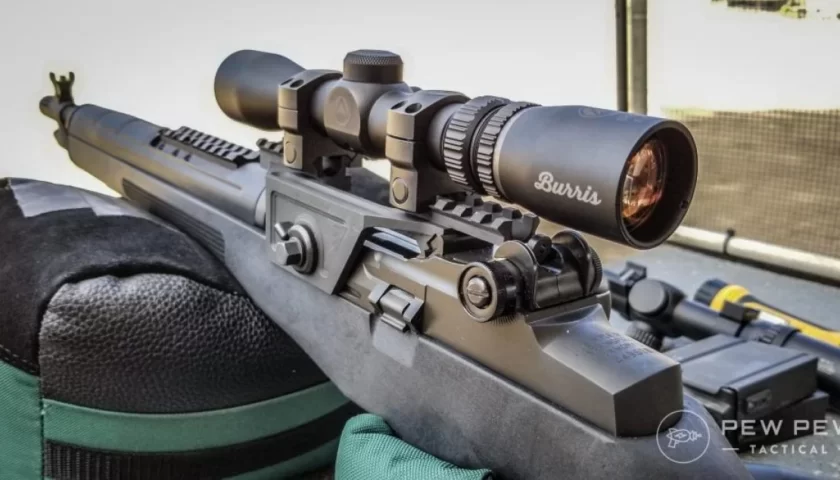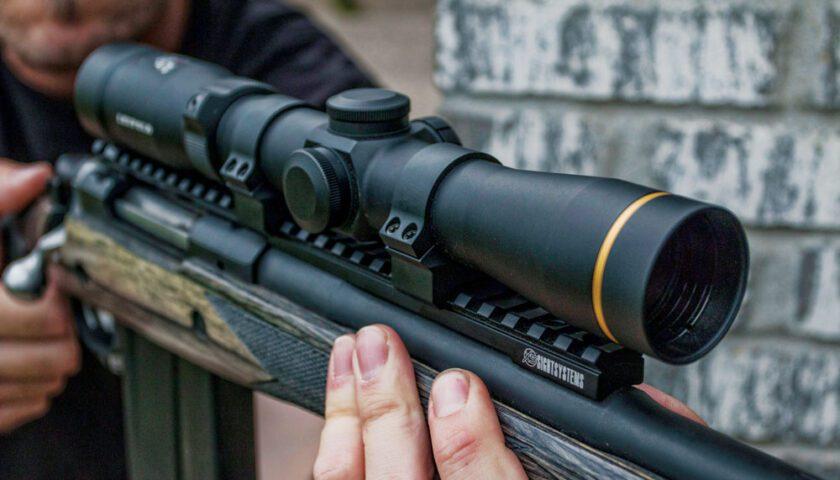Gadgets
How To Choose A Scout Scope

In the realm of precision shooting, the choice of optics can significantly impact performance, and when it comes to scout scopes, understanding their unique features is crucial.
The forward positioning of a scout scope allows shooters to maintain awareness of their surroundings while keeping the target in sight, a valuable advantage in dynamic shooting situations.
This introductory guide provided by the one-of-a-kind platform Arms Directory aims to illuminate the key factors to consider when selecting a scout scope, offering insights into optic quality, reticle types, eye relief, and compatibility with different rifles.
Joining authority sources online can help you find licensed reputable manufacturers, ensuring that enthusiasts can make well-informed decisions when enhancing their firearm optics.
Table of Contents
Factors to Consider When Choosing a Scout Scope

A scout scope is distinct from traditional rifle scopes in its forward-mounted position on the barrel rather than near the receiver. This design offers enhanced situational awareness, rapid target acquisition, and improved peripheral vision. Unlike traditional rifle and crossbow scopes, scout scopes are built for versatility, making them ideal for scout rifles used in various scenarios.
Selecting the right scout scope requires a nuanced understanding of several key factors, each contributing to the overall performance and usability of the optic.
1.Optic Quality
The optic quality is the bedrock of a reliable scout scope. Clarity, brightness, and resolution are crucial aspects that directly impact your shooting experience. High-quality lenses, coatings, and construction materials contribute to a clear and crisp sight picture, especially in challenging lighting conditions. When evaluating optic quality, consider factors such as lens coatings that reduce glare and enhance light transmission.
2.Reticle Type
The reticle, or the aiming point within the scope, comes in various types to suit different shooting scenarios. Common reticle types include duplex, mil-dot, and illuminated reticles. The choice depends on personal preference and the intended use of the scout scope. For quick target acquisition, a simple duplex reticle might be suitable, while a mil-dot reticle offers more precise aiming for longer-range shots. Illuminated reticles are advantageous in low-light conditions.
3.Eye Relief
One of the distinctive features of a scout scope is its extended eye relief, allowing the shooter to maintain a comfortable distance from the eyepiece. This design minimizes the risk of recoil-related injuries and provides flexibility in shooting positions. Ensure that the scout scope you choose offers ample eye relief, typically ranging from 9 to 12 inches. This factor is especially crucial for those using powerful cartridges with substantial recoil.
4.Compatibility with Your Rifle
Not all scout scopes are universally compatible with every rifle. Consider the specifics of your firearm, including its action type, caliber, and intended use. Some scout scopes are optimized for certain rifle models or actions, ensuring a seamless integration for optimal performance. Check for compatibility features, such as mounting options and adjustments, to guarantee a secure and efficient fit on your rifle.
The Pros and Cons of Scout Scopes

When venturing into the realm of optics for your firearm, understanding the distinct advantages and potential drawbacks of scout scopes compared to traditional scopes is essential for making an informed decision.
Benefits of Scout Scopes
Rapid Target Acquisition. Scout scopes are renowned for their forward-mounted design, facilitating quicker target acquisition. Placed closer to the shooter’s eye and allowing for a wider field of view, these scopes excel in scenarios where speed is critical, such as competitive shooting or hunting.
Enhanced Situational Awareness. The forward positioning of a scout scope provides shooters with improved situational awareness. Peripheral vision remains unobstructed, allowing users to maintain awareness of their surroundings while keeping the target in sight. This is particularly advantageous in dynamic and unpredictable shooting environments.
Versatility in Shooting Positions. The extended eye relief of scout scopes allows for greater flexibility in shooting positions. Shooters can maintain a comfortable distance from the eyepiece, reducing the risk of recoil-related injuries. This adaptability makes scout scopes suitable for a variety of shooting styles.
Drawbacks of Scout Scopes
Limited Magnification Range.One of the main drawbacks of scout scopes is their typically limited magnification range compared to traditional scopes. While excellent for quick shots and closer targets, scout scopes may not provide the level of magnification required for long-range precision shooting.
Potential Trade-off in Long-Range Accuracy. The forward-mounted design that enhances rapid target acquisition may come at a cost in terms of long-range accuracy. Traditional scopes, mounted closer to the shooter’s eye, may offer better precision for distant targets.
Understanding these pros and cons is crucial for aligning your optic choice with your specific shooting needs. If rapid target acquisition and situational awareness are paramount, a scout scope may be the ideal choice. However, if long-range precision is your primary focus, a traditional scope might better suit your requirements.
Tips for Mounting and Zeroing a Scout Scope

Properly mounting and zeroing a scout scope is paramount for achieving optimal accuracy and unleashing the full potential of your firearm. Here are essential tips to guide you through this crucial process:
Secure and Level Mounting
Ensure a secure and level mounting of your scout scope. Use high-quality scope rings and bases, following the manufacturer’s guidelines. The forward positioning of a scout scope demands precise placement, so take the time to align it correctly. Check for levelness both horizontally and vertically to avoid issues with windage and elevation adjustments.
Eye Relief Adjustment
Capitalize on the extended eye relief feature of your scout scope. Position the scope to provide sufficient eye relief, typically ranging from 9 to 12 inches. This not only prevents recoil-related injuries but also ensures a comfortable shooting experience. Adjust the scope’s position until you achieve optimal eye relief while maintaining a clear sight picture.
Bore Sighting
Bore sighting is a valuable technique for aligning your scout scope with the rifle’s bore. This initial alignment reduces the amount of adjustment required when zeroing at the range. While bore sighting doesn’t replace the need for live-fire zeroing, it serves as a helpful starting point, saving time and ammunition.
Start at a Short Distance
When zeroing your scout scope, begin at a shorter distance, such as 25 yards. This minimizes the margin for error and allows you to make precise adjustments before moving to longer distances. Ensure a stable shooting platform and consistent shooting technique to obtain accurate and repeatable results.
Adjust Windage and Elevation
Carefully adjust windage and elevation settings based on your shot placement. Follow a systematic approach, making incremental adjustments and rechecking your point of impact. Consistency is key; make notes of each adjustment to track your progress.
Confirm at Longer Distances
Once you’ve achieved a solid zero at shorter distances, confirm your zero at longer ranges, such as 100 yards. This step ensures that your scout scope is accurate across various distances and shooting scenarios.
Summary
In navigating the world of scout scopes, key considerations include prioritizing optic quality, selecting an appropriate reticle type, ensuring ample eye relief, and confirming compatibility with your rifle. The forward-mounted design of scout scopes offers advantages such as rapid target acquisition and enhanced situational awareness, balanced with limitations like a typically limited magnification range. Proper mounting and zeroing are critical; follow secure and level mounting procedures, capitalize on extended eye relief, and use bore sighting for precision. Whether opting for the benefits of a scout scope or the precision of a traditional scope, informed decisions are vital for an optimized shooting experience.
Also Read:-

-

 Business3 years ago
Business3 years agoHow to Do Long-Distance Moves with Children
-

 Travel2 years ago
Travel2 years agoQuick Guide: Moving To Santa Rosa?
-

 Real Estate3 years ago
Real Estate3 years agoWhy Dubai Festival City is a Great Neighbourhood for Young Learners
-

 Business3 years ago
Business3 years agoIs Guest Posting a Good Inbound Marketing Strategy?
-

 Business1 year ago
Business1 year agoThe Ultimate Guide To Thriving In Your Printing Franchise
-

 Business1 year ago
Business1 year agoExploring The Benefits And Challenges Of Restaurant Franchising
-

 Tech3 years ago
Tech3 years agoCyber Table That Will Change Your Life
-

 Lifestyle1 year ago
Lifestyle1 year agoDallas’ Hidden Gems: 6 Must-Try Restaurants Off The Beaten Path!









Recent Comments